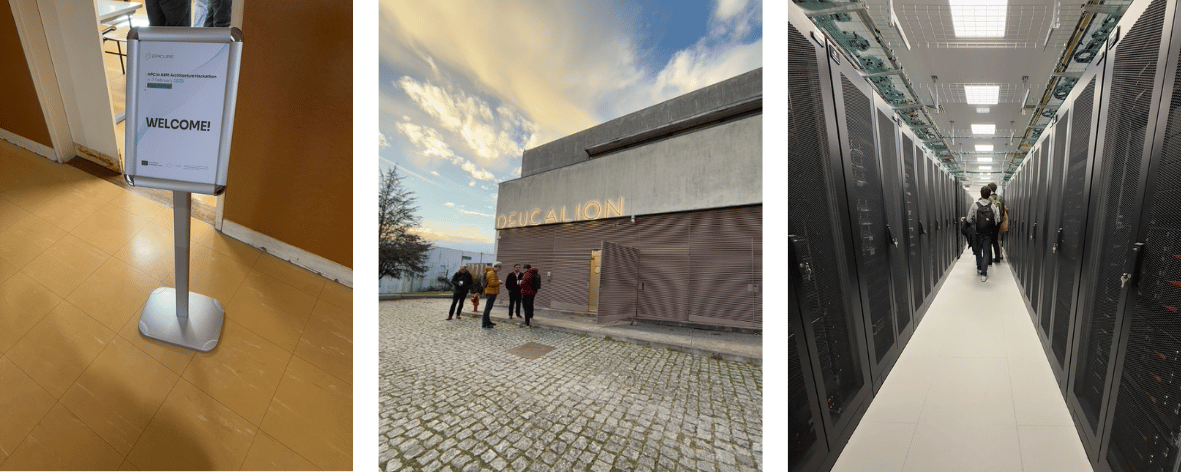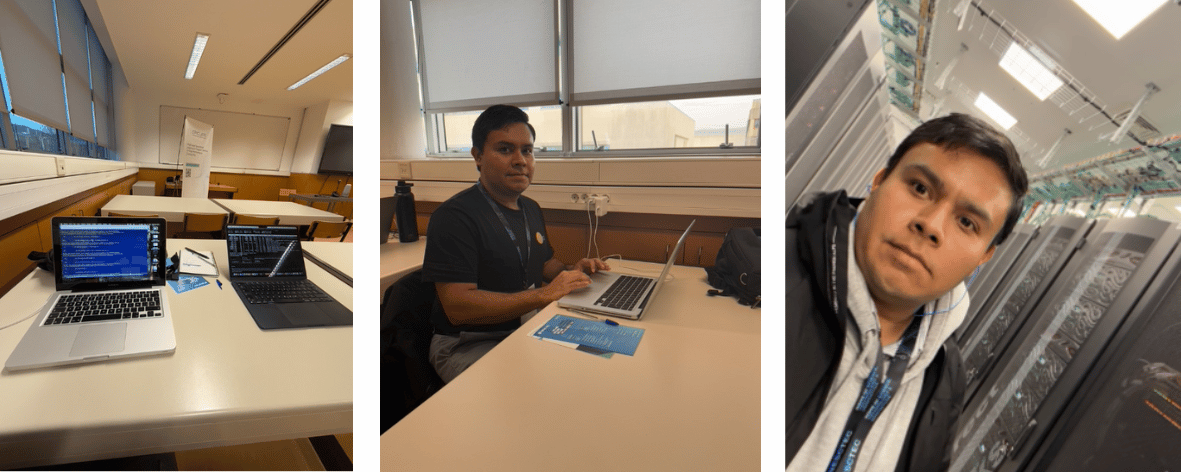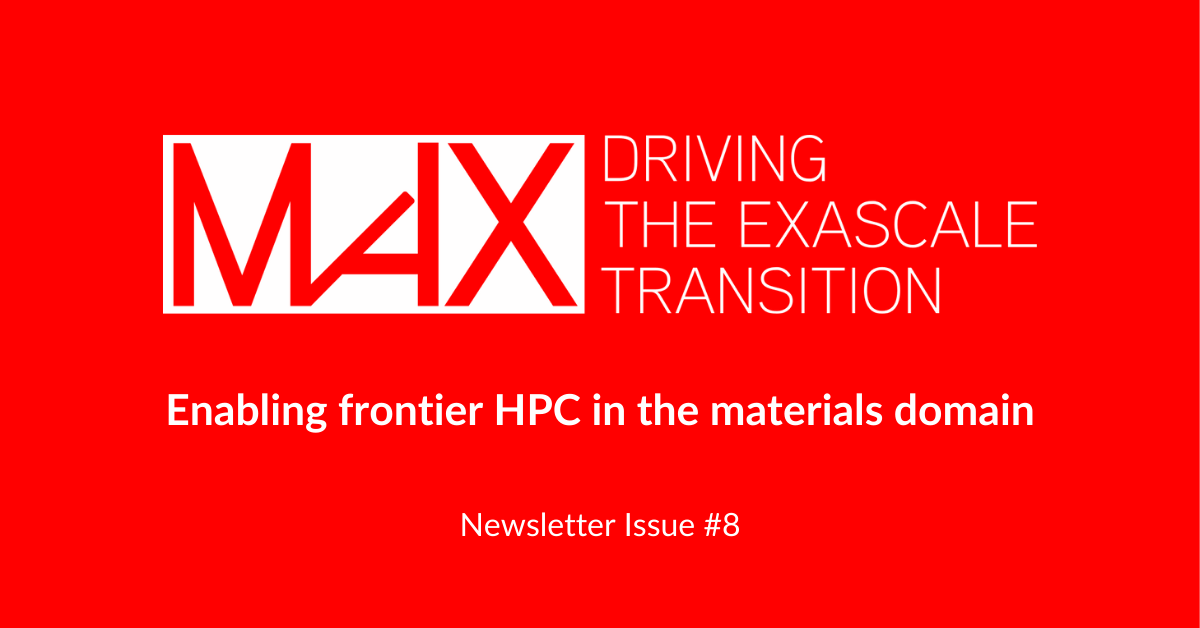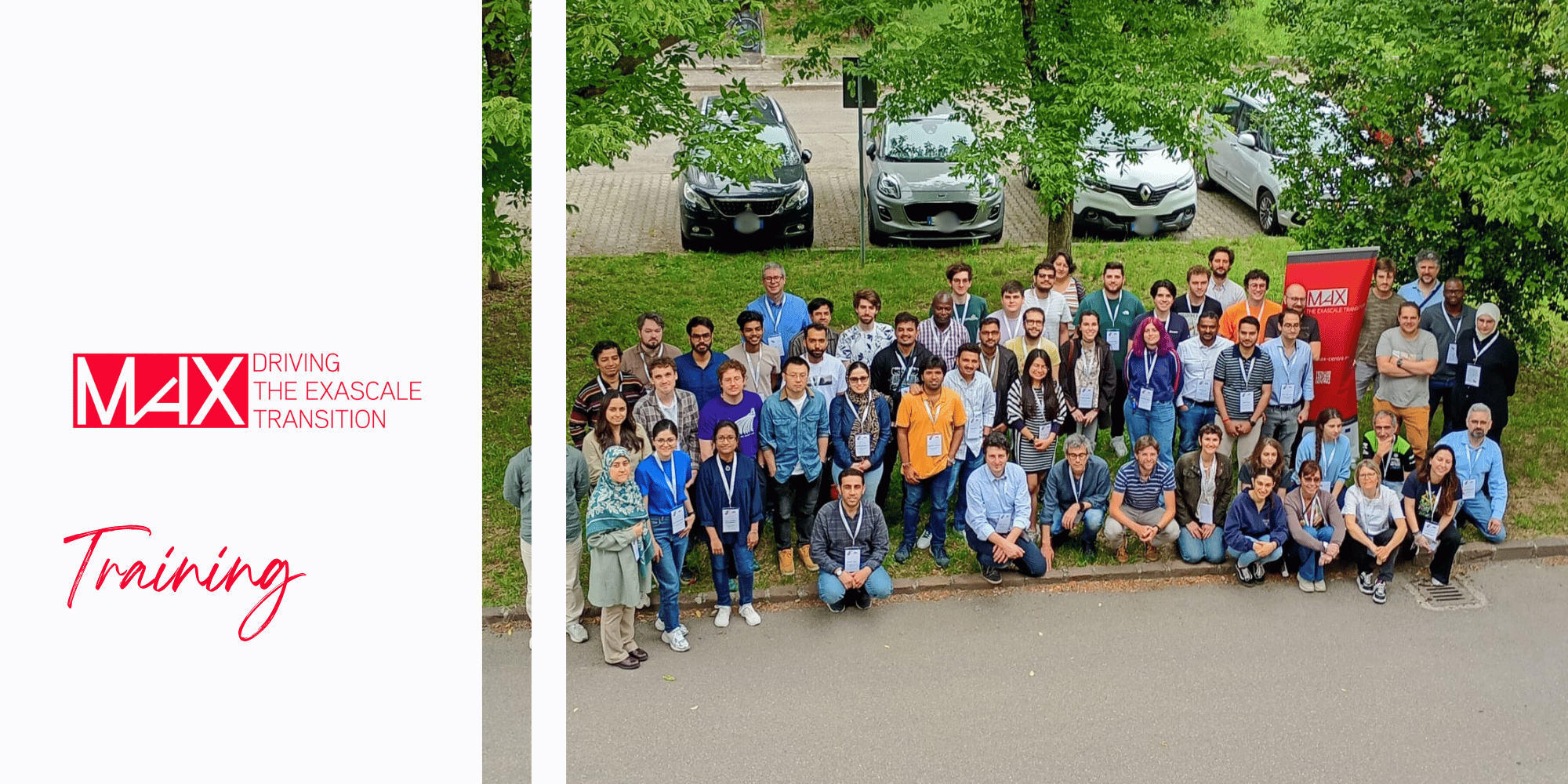SIESTA 5.2.2: From running on ARM in DEUCALION to global release through EESSI
SIESTA 5.2.2 was successfully adapted for ARM processors during the EPICURE HPC Hackathon in Braga, Portugal. Tested on the DEUCALION supercomputer, it now runs efficiently on ARM and is included in the EESSI software stack. With an EasyBuild recipe and automated benchmarking using JUBE, SIESTA is more accessible, consistent, and ready for future HPC platforms.

The EPICURE HPC in ARM Architecture Hackathon was held from February 4 to 7, 2025, at INESC TEC’s hub at the University of Minho in Braga, Portugal. The event focused on high-performance computing using ARM processors. As ARM architecture is becoming more important in the HPC world, this hackathon was an unmissable opportunity for researchers and developers to gain insight and practice with the upcoming ARM-based computing platforms.
MaX partner and SIESTA team member Anthoni Alcaraz Torres (PostDoctoral Researcher at ICN2) had the privilege of participating in the event. During the Hackathon, Alcaraz Torres and the other participants brought their codes and worked on adapting and improving them to run on ARM CPUs. This hands-on approach allowed attendees to immediately apply what they were learning. A special feature of the event was access to the ARM partition of the DEUCALION supercomputer, part of the EuroHPC network. This allowed participants to test their code on powerful ARM-based systems with the support of expert mentors.
«In life, opportunities to learn and grow often arise at the most unexpected times! Recently, I came across one of those: the EPICURE hackathon allowed me to test my skills in configuring, installing, and running MaX code SIESTA efficiently on ARM architecture on DEUCALION. I generated the first pull request on the easybuild project on Github so that shortly we will have SIESTA on EESSI available for everyone.» Anthoni Alcaraz Torres (PostDoctoral Researcher at ICN2)
At the event, Alcatraz Torres could test the latest release of MaX lighthouse code SIESTA, SIESTA 5.2.2, and adapt it for ARM processors. He learned how to configure, install, and run SIESTA 5.2.2 on the ARM partition in DEUCALION, and collaborated with other fellow scientists and developers in the HPC field.
The hackathon led to two valuable outcomes for the SIESTA team:
-
The SIESTA team worked with Miguel Dias Costa (HPC Architect, University of Coimbra) to create an EasyBuild recipe for SIESTA. This makes it much easier to install SIESTA on any HPC system that uses EasyBuild, a tool that simplifies the setup of scientific software.
-
Thanks to this work, Alan O’Cais (Technical Manager, MultiXscale HPC Centre of Excellence) was able to add SIESTA version 5.2.2 to the EESSI software stack [*]. This helps researchers everywhere use SIESTA more easily and reliably, saving time and improving access to powerful scientific tools.

Since the EPICURE Hackathon, the SIESTA team has started using the ARM partition of the DEUCALION supercomputer, gaining access to powerful HPC resources. As a result of these efforts, SIESTA version 5.2.2 is now easily available to users around the world. Everyone can access and use the same reliable version, which ensures consistency in research.
With SIESTA now running correctly on ARM processors, it is also possible to automate performance tests using JUBE [**]. This helps save time and improves the accuracy of benchmarks on new systems.
By supporting the transition to ARM, events such as the EPICURE HPC in ARM Architecture Hackathon can help the HPC community get ready for new technologies and more efficient computing in the future.
Acknowledgement
This achievement was possible through the collaboration of many people across different European projects. The DEUCALION support team played a key role, with Bernardo Malaca (HPC User Support, CNCA - Centro Nacional de Computação Avançada) and Marcos Gouveia (University of Coimbra) providing important help during and after the hackathon.
References:
EasyBuild recipe: EasyBuild setup for SIESTA
Supported CPU targets: supported microarchitectures where to run SIESTA
____________________
[*] What is EESSI?
The European Environment for Scientific Software Installations (EESSI) is a joint effort by European HPC partners to build a shared set of scientific software for different systems. The ambition of EESSI is to build a shared collection of scientific software for different computing systems and make them available to a broad range of users. Funded via participation in the EuroHPC Centre-of-Excellence MultiXscale, EESSI aims to reduce repeated work across research centers by creating a common software stack. The ambition of the project is to have scientific software run on various platforms, including laptops, workstations, HPC clusters, and cloud systems, while supporting many types of processors and operating systems. A strong emphasis of EESSI’s effort is focused on performance, easy maintenance, and strong testing. By offering a consistent user experience, EESSI is working to help researchers access reliable tools wherever they work, saving time and improving collaboration.
[**] What is JUBE?
Benchmarking is essential for comparing the performance of software, but it can be difficult and time-consuming, especially when dealing with many settings. To solve this, the JUBE benchmarking environment helps automate and manage benchmarks in a clear and repeatable way. Developed by the Jülich Supercomputing Centre, JUBE allows users to create and run benchmark tests across different systems and analyze the results efficiently. It uses scripts to handle tasks before and after benchmarks, making data easier to read and understand. The JUBE4MaX repository offers tools to benchmark MaX applications on various platforms, helping researchers test and improve software performance.



